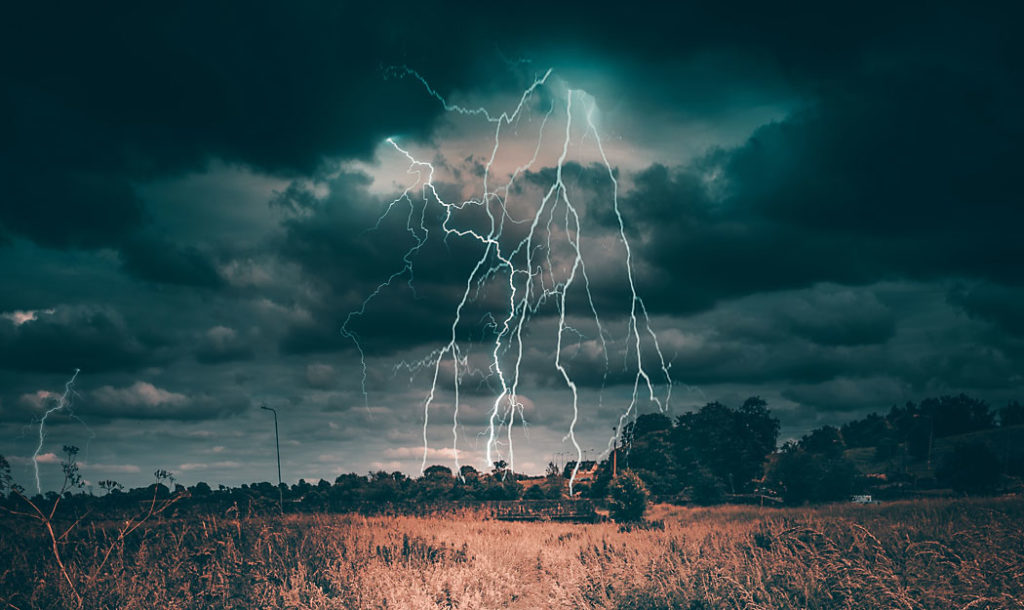
Each year, lightning causes $4 to $5 billion in damages, according to the severe storms laboratory at the National Oceanographic and Atmospheric Administration. Recent decades have seen a proliferation of electronics with printed circuit boards and memory chips in the home. They’ve been added to furnaces, air conditioners, thermostats, microwaves, coffee makers, and refrigerators—not to mention TVs and computers. What’s the best way to protect these expensive devices from a lightning strike?
Get Grounded
Your first line of defense is a properly grounded electrical system, one that provides an alternative path around the electrical system and is connected to the earth, typically by eight-foot-long copper-plated steel rods. The National Electrical Code requires home electrical systems to be grounded. If you suspect inadequate grounding in your home, a licensed electrician can perform an evaluation.
Surge Supression
If your home is already properly grounded, next on the list to protect your home is a high-energy surge arrester, which is installed in your circuit breaker panel where incoming power lines meet your home wiring. This typically costs $100 to $200, depending on the brand and condition of your circuit breaker panel. If your house still has fuses, lightning protection can be added, but it may be time for an upgrade to your vintage system.
The low-energy surge suppressor often used with a personal computer is an added level of protection that is also recommended. When lightning strikes, grounding and proper surge suppression usually minimize the damage, but the speed and magnitude of a lightning strike can still render electrical systems useless, burning out circuit boards in less than a second. For this reason, unplugging appliances from power and telephone lines during thunderstorms is advisable. Like other natural disasters, lightning carries with it a sense of inconsistency and mystery. Just as a tornado may leave a single house standing in a neighborhood of devastation, a lightning-induced surge can randomly choose victims among the dozens of appliances in your home.
Gas Leak Fires
One other and possibly more devastating problem associated with lightning strikes is house fires caused by ruptures in corrugated stainless steel tubing (CSST) for gas lines. Until relatively recently, propane and natural gas were transported to appliances through rigid black iron pipe. Because of its ease of installation, CSST has come into widespread use in the last ten years. However, CSST’s flexible, thin walls have a propensity to fail when subjected to nearby lightning strikes. When lightning strikes a tree, a momentary surge of great intensity rushes through the earth. Any metallic objects—including water and gas lines—provide a low-resistance pathway for that surge to enter your home.
Identifying CSST
You’ll know if you have CSST in your home if you have a half-inch to one-inch flexible yellow tube supplying your furnace, water heater, range, or dryer. CSST’s flexibility comes from being quite thin-walled, and therein lies the problem. When electrical current flows through it, if the current jumps to another nearby metallic object, a hole can be opened in the thin gas line, causing a leak. A licensed electrician can make this code-required repair for you for $100 to $200, depending on the difficulty of connecting the incoming black iron pipe to an appropriate grounding source.
Steve Boggs is a State of Iowa licensed Master Electrician working in Fairfield, Iowa, since 1983.
